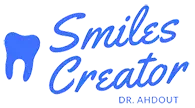Sedation dentistry offers a wide range of benefits to patients. It can help to relieve anxiety and allow for a more comfortable experience. This type of care can also save time and money. Several dental procedures can be completed in a single visit.
Dental phobias are a common condition. In fact, half of adults in the US suffer from some level of dental fear. Fear of the dentist can lead to a “cycle of avoidance” where people skip dental care or suffer oral problems. Those who do not get regular dental care may even develop tooth decay and gum disease. Often, these complications can be prevented through sedation dentistry.
Anesthesia can be used for both invasive and non-invasive dental treatments. Depending on the type of procedure, the patient may be put under heavy or light sedation. Some people fall asleep while under sedation, while others become disoriented and are unaware of what is happening around them. However, anesthesiologists use a variety of techniques to achieve the right level of sedation for each patient.
Oral sedation can be used to make the patient feel relaxed before a procedure. The patient will be given a pill that makes them feel drowsy. Typically, this is administered one hour before the appointment. Afterward, the pill will wear off and the patient will become awake. Another type of sedation, inhaled sedation, uses nitrous oxide. The inhaled form is a mild sedative that can be inhaled through a mask over the nose. Nitrous oxide produces sedative effects within seconds.
For people with dental phobias, sedation can be a way to get dental work done. With sedation, the patient can sit in the chair for the entire procedure, allowing the dentist to complete multiple dental procedures in a single visit. During the procedure, the dentist can communicate with the patient, if desired. A dentist can also control the amount of sedation by monitoring the vital signs of the patient.
Patients may be given intravenous sedation through an IV. This type of anesthetic is usually administered by a dentist or an anesthesiologist. If a dentist decides to administer this type of sedation, it is important to have a reliable driver to take the patient home.
Nitrous oxide (laughing gas) is a form of light sedation that can be inhaled through a small mask over the nose. Laughing gas can be a safe and effective sedative that can make a patient feel drowsy, but does not put the patient to sleep. Laughing gas is a great alternative for patients who need a dental procedure but are nervous.
General anesthesia is a type of anesthetic that is often used for patients with severe dental phobias. Normally, general anesthesia is only used for very complex dental surgeries. Unlike other forms of sedation, general anesthesia puts the patient to sleep for the duration of the procedure. After the procedure, the patient will need a few days of rest to recuperate. Those who undergo general anesthesia will also need someone to drive them to and from their appointments.
Breaking Down the Myths About Sedation Dentistry
Everything You Need to Know About Sedation Dentistry

